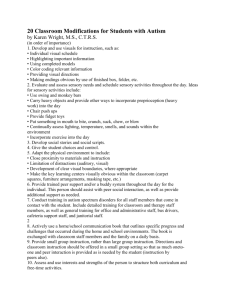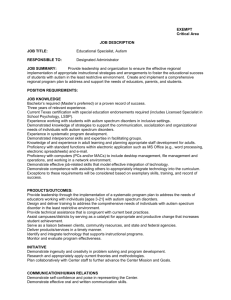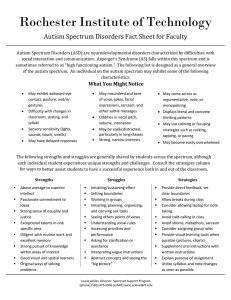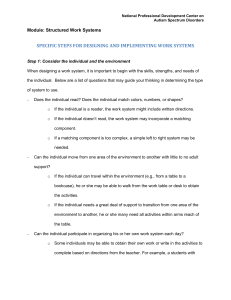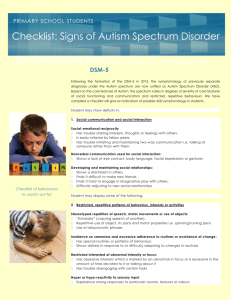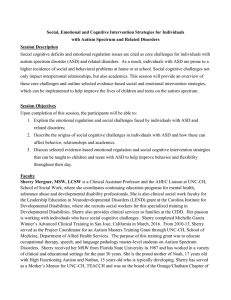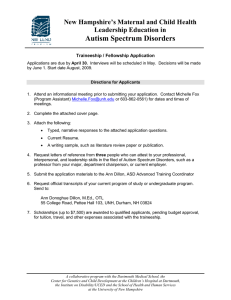Video-Modeling Group Annotated Bibliography 01/03/2012 Apple
advertisement
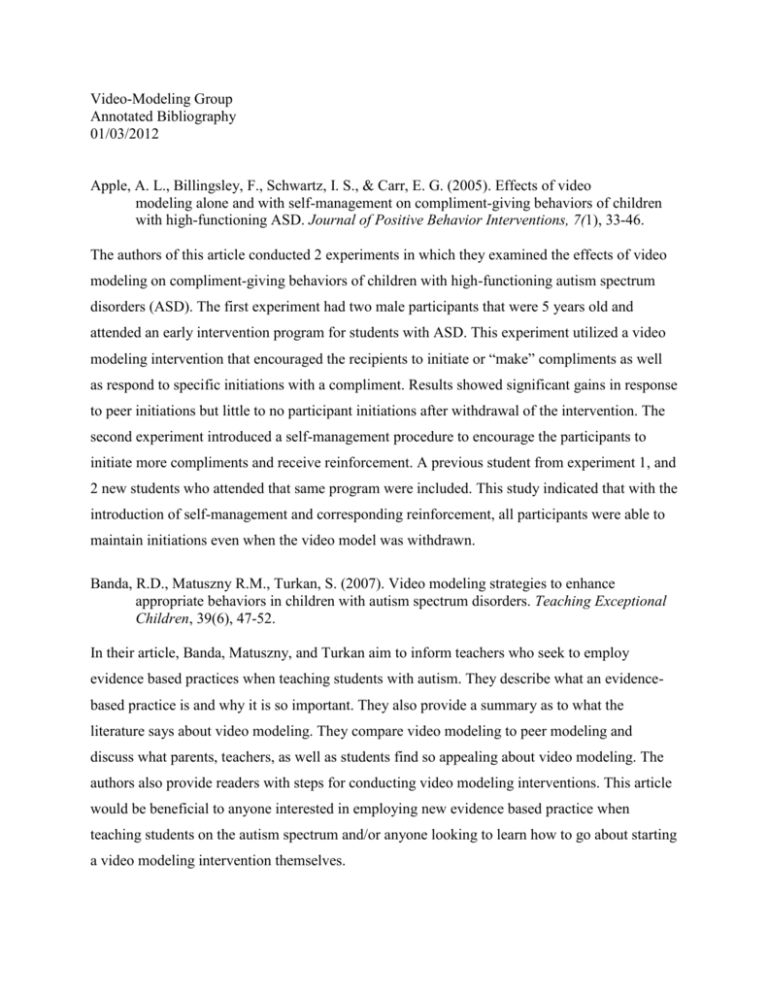
Video-Modeling Group Annotated Bibliography 01/03/2012 Apple, A. L., Billingsley, F., Schwartz, I. S., & Carr, E. G. (2005). Effects of video modeling alone and with self-management on compliment-giving behaviors of children with high-functioning ASD. Journal of Positive Behavior Interventions, 7(1), 33-46. The authors of this article conducted 2 experiments in which they examined the effects of video modeling on compliment-giving behaviors of children with high-functioning autism spectrum disorders (ASD). The first experiment had two male participants that were 5 years old and attended an early intervention program for students with ASD. This experiment utilized a video modeling intervention that encouraged the recipients to initiate or “make” compliments as well as respond to specific initiations with a compliment. Results showed significant gains in response to peer initiations but little to no participant initiations after withdrawal of the intervention. The second experiment introduced a self-management procedure to encourage the participants to initiate more compliments and receive reinforcement. A previous student from experiment 1, and 2 new students who attended that same program were included. This study indicated that with the introduction of self-management and corresponding reinforcement, all participants were able to maintain initiations even when the video model was withdrawn. Banda, R.D., Matuszny R.M., Turkan, S. (2007). Video modeling strategies to enhance appropriate behaviors in children with autism spectrum disorders. Teaching Exceptional Children, 39(6), 47-52. In their article, Banda, Matuszny, and Turkan aim to inform teachers who seek to employ evidence based practices when teaching students with autism. They describe what an evidencebased practice is and why it is so important. They also provide a summary as to what the literature says about video modeling. They compare video modeling to peer modeling and discuss what parents, teachers, as well as students find so appealing about video modeling. The authors also provide readers with steps for conducting video modeling interventions. This article would be beneficial to anyone interested in employing new evidence based practice when teaching students on the autism spectrum and/or anyone looking to learn how to go about starting a video modeling intervention themselves. Bellini, S., Akulian, J. (2007). A meta-analysis of video modeling and video selfmodeling interventions for children and adolescents with autism spectrum disorders. Council for Exceptional Children, 73(3), 264-287. Scott Bellini and Jennifer Akullian of the Indiana Resource Center based out of Indiana University set out to conduct a review of the existing literature about video modeling interventions. They chose to analyze 23 single-subject studies published between 1980 and 2005. In their meta-analysis of the existing literature, they examined the outcomes of these studies. Specifically, they examined intervention, maintenance, and generalization effects of video modeling on the social communication skills, functional skills, and behavioral functioning of individuals with autism spectrum disorders. When analyzing the 23 studies using a coding system, the authors measured inter-rater reliability and found that inter-rater agreement was 98%. Not only did they measure and report on their own reliability, but they also analyzed and reported on the reliability and fidelity of the studies they reported on. This article would be beneficial to anyone interested in gaining an understanding of what current literature says about video modeling or anyone interested in evidence-based practices that can be used to benefit the social communication skills, functional skills, and behavioral functioning of individuals with autism spectrum disorders.



